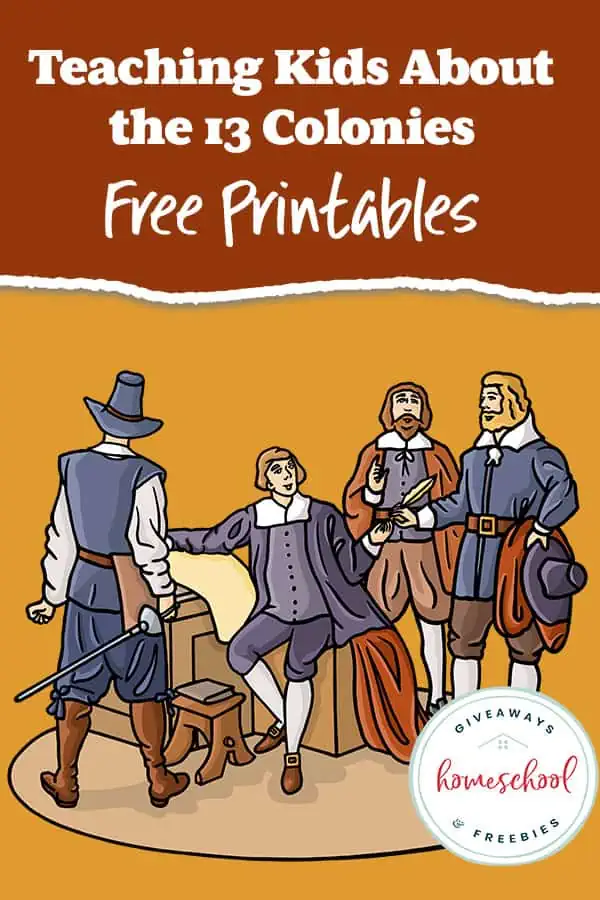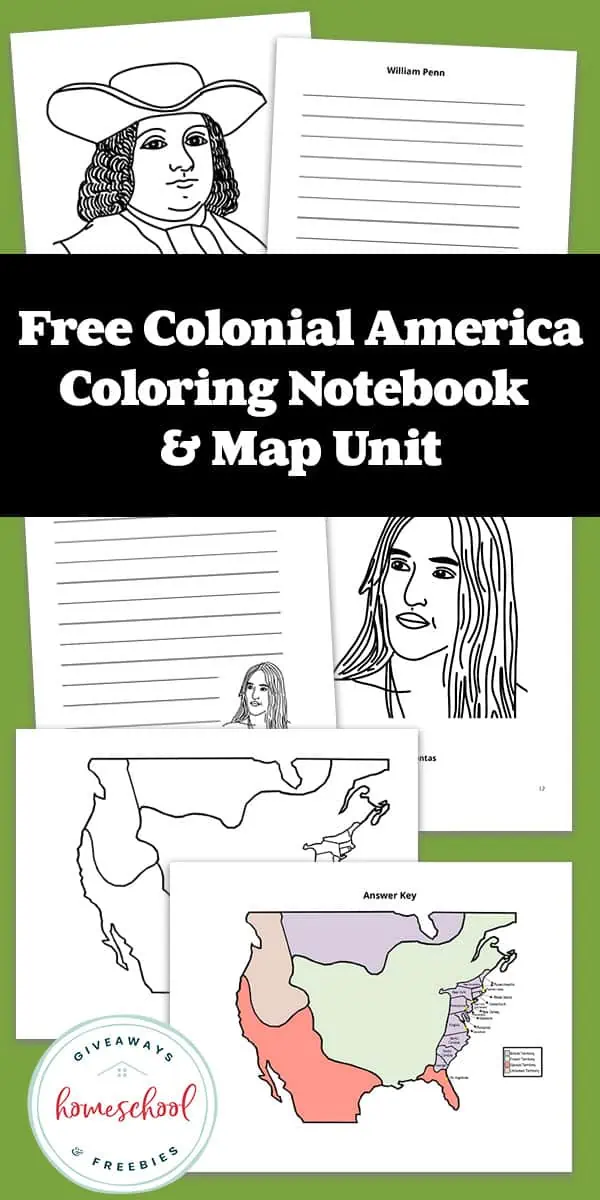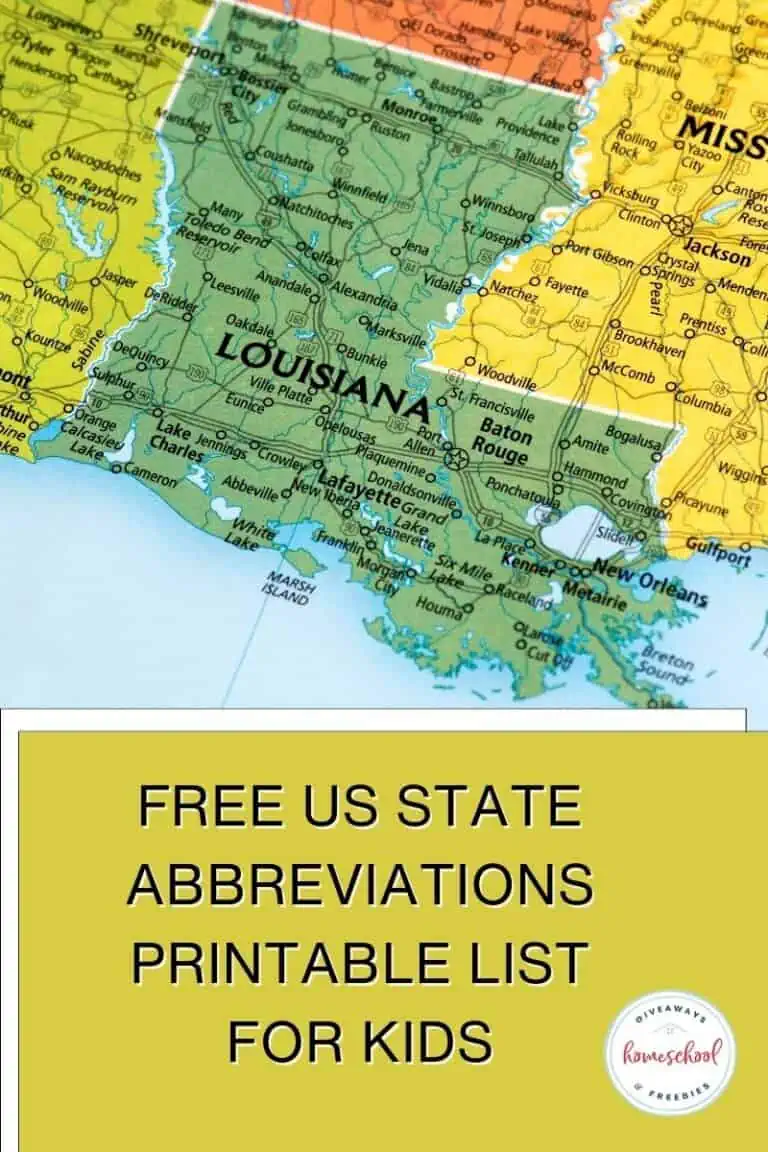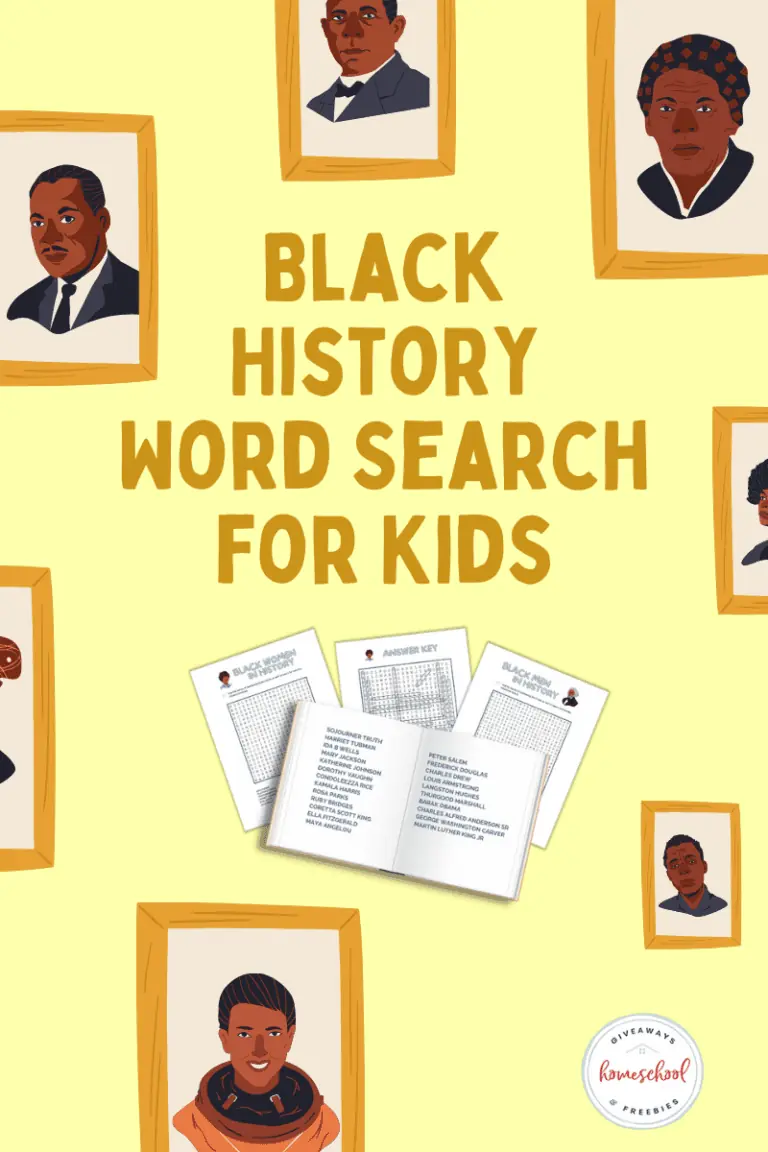Teaching Kids About the 13 Colonies (Free Printables)
Published:
January 23, 2023

Contributor:
Bonnie Rose Hudson
Disclosure: This post may contain affiliate links, meaning if you decide to make a purchase via my links, I may earn a commission at no additional cost to you. See my disclosure for more info.
The thirteen English colonies in the New World formed the foundation for a new nation. Understanding the colonies, how they developed, and why they broke away from England is crucial to understanding American history and is an important part of world history as well. Let’s take a closer look at the 13 colonies and this key part of history and see what interesting facts we can discover!
The Thirteen Colonies
When people refer to the thirteen original colonies in American history, they are referring to a collection of colonies that began in the 1600s and 1700s along the east coast of North America, stretching from what is now Maine in the north to Georgia in the south.
What is a colony?
A colony is an area with a central government system that is ruled by a foreign nation. Several nations, including England, France, and Spain, attempted to establish colonies in the New World and in the land that became the United States of America.
Establishment of the 13 Colonies
The 13 colonies in America formed over a long period and were settled for many different reasons. Some were settled by people looking to make a fortune off the land’s natural resources. Others were settled by people who wanted religious freedom and had faced religious persecution, whether in England or in another of the colonies. Still others were settled for various other reasons.
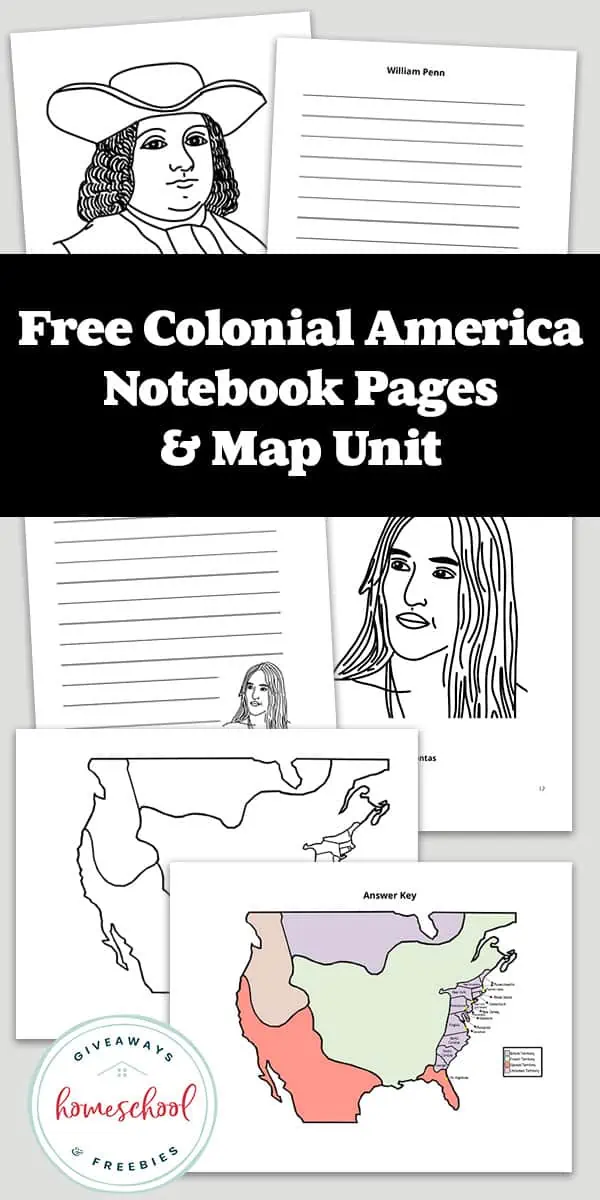
The 13 Colonies
From Virginia to Georgia, it took 126 years for the 13 colonies to all be established. Here’s a timeline of events that illustrates the birth of each of the colonies.
1607 Virginia is Settled
Virginia was the first of the thirteen colonies to be established, but it had a very rocky and uncertain start. Spanish missionaries had arrived in 1570 but were forced out by the Native Americans.
Sir Walter Raleigh tried to build colonies in the New World in 1584 for Queen Elizabeth I of England, but that also failed. King James I established the Virginia Company in 1606, and in May 1607, they established Jamestown, the first permanent English settlement in North America.
1620 Massachusetts Becomes the Second English Colony
Massachusetts grew to become the largest and most successful of the early settlements in New England. It’s possible that Leif Eriksson first explored the area in 1000 and that French and Spanish fishermen visited in the 1400s.
The English and French explored in the early 1600s, but in 1620, the Pilgrims, whom we’ll read more about in just a bit, settled in Plymouth, opening a new chapter in American history. In 1628, John Endecott settled the Massachusetts Bay Colony, which John Winthrop and a group of Puritans joined two years later.
1623 New Hampshire Became a Colony
The exact date New Hampshire began as a colony is a little harder to establish than it is for many of the other early colonies.
Historians disagree on whether a settlement founded by David Thomson at Odiorne’s Point (now a part of Rye) in 1623 came first or if the first New Hampshire settlement was founded by Edward Hilton at Hilton’s Point (now Dover) also in the early 1620s. John Mason and Sir Ferdinando Gorges also settled in New Hampshire in the 1620s.
1624 New York Becomes a Colony After 100 Years of Exploration
The area of New York was visited by explorers for about one hundred years before it became a colony. Giovanni da Verrazzano was probably the first European to arrive around 1524. Henry Hudson, an English explorer working for the Dutch, claimed much of New York, as well as New Jersey, Delaware, and part of Connecticut. He led significant explorations of the area, claiming it for the Netherlands.
The colony became New Netherland, and the Dutch quickly began to settle the area. Dutch merchants who were part of the Dutch West India Company founded Fort Orange (now the city of Albany) in 1624, which became the first European settlement in the colony. As the Dutch presence in New York grew, they established New Amsterdam on Manhattan Island, and through their leader Peter Minuit, purchased the island from the Native Americans in 1626.
1633 Connecticut Becomes the Fifth English Colony in America
Connecticut was first explored by the Dutch explorer Adriaen Block, but unlike in New York, the Dutch did not establish a permanent presence in Connecticut. Instead, it was the British who established the first permanent settlement in the colony.
Some of the early settlers who shaped Connecticut’s history came from Massachusetts looking for religious and political freedom. Clergyman Thomas Hooker was one of the most influential of these settlers. He worked to create a colony where the government ruled because the people gave them that authority.
This idea was later known as “government of the people, by the people, for the people.” This idea became the Connecticut legal code known as the Fundamental Orders. This code became what some people claim was the first written constitution in what would become the United States.
1634 Leonard Calvert Establishes the First English Settlement in Maryland
Explorers including Pedro Menéndez de Avilés, who was a Spanish governor of Florida, and Captain John Smith from Virginia explored Maryland in the early days of colonization, but in 1632, a key event in the history of Maryland occurred.
English King Charles I gave Maryland to George Calvert, Lord Baltimore. George Calvert died before the charter was official, so King Charles gave it to Cecilius Calvert, George’s son. Cecilius’ brother Leonard went on to establish St. Mary’s City, the first permanent English settlement in Maryland. Maryland also became the first of the colonies to establish religious freedom.
1636 Roger Williams Establishes Rhode Island to Protect Religious Freedom
Rhode Island was explored by both Giovanni da Verrazzano and Adriaen Block, but it was not established as a colony until 1636 when Roger Williams left the Massachusetts Bay Colony. He had a conflict with the leaders of the colony over matters of religious liberty and established Providence Plantations as a home for people who were seeking religious freedom.
He also tried to respect the freedoms of the Native Americans in the region.
1638 The Swedish Settle in Delaware
Delaware was likely first explored by Henry Hudson in 1609, but it owes its name to Captain Samuel Argall from the Virginia colony who visited during a storm in 1610. He sought shelter during a storm in Delaware Bay, which he named De La Warr Bay in honor of the governor of Virginia, Lord De La Warr.
The Dutch came in 1631 but were driven out by the Native Americans. The Swedish came in 1638 and built Fort Christina, the first permanent European settlement in the area. The Swedish eventually lost Delaware to the Dutch, who in turn lost their lands to the English.
1643 Pennsylvania is Originally Established as Part of New Sweden
The part of Pennsylvania’s early colonial history that is best known to many is the story of William Penn, whom we’ll read about shortly. The first permanent European settlement in Pennsylvania, however, was not built by the English but by the Swedish. They settled on Tinicum Island, near Philadelphia, in 1643, and made the area part of New Sweden.
1653 North Carolina Becomes the Tenth Colony in America
The European part of North Carolina’s history began with French and Spanish exploration in the 1500s, but neither country built permanent settlements. In 1587, England established a colony on Roanoke Island, which we’ll read more about.
The English made another attempt to build a colony in North Carolina in 1629 but failed once again. It wasn’t until 1653 when Europeans from Virginia finally established a permanent settlement in the area of Albemarle Sound.
1660 After Years of Conflict, New Jersey is Permanently Settled by the Dutch
Like many places in the thirteen colonies, New Jersey was first explored by Giovanni da Verrazzano and Henry Hudson. It was settled by both the Dutch and the Swedes, who fought with each other at times. The Dutch built Pavonia (which is now part of Jersey City) in 1630, but their first permanent settlement in the colony was the town of Bergen in 1660.
In 1664, the English took control of New Jersey, and King Charles II of England gave the area to his brother James, Duke of York. James then gave it to two friends, who worked with the settlers to build a healthy colony where people could buy land and enjoy religious freedom.
New Jersey divided for a time into West Jersey and East Jersey but reunited into a single English colony in 1702.
1670 The English Establish a Settlement in South Carolina
Both the Spanish and French attempted to establish settlements in South Carolina but failed. In 1669, England, who also claimed the area, sent settlers. They built the first permanent European settlement in South Carolina in 1670. Ten years later, they moved and named the new settlement “Charles Town,” which became “Charleston” in 1783.
1733 Georgia is Founded by James Oglethorpe
The Spanish explored and settled Georgia in the 1500s, but they were driven out by the Native Americans and pirates, both of whom were encouraged to attack Spain by the English. The English then defeated Spain in Queen Anne’s War, which ended in 1713.
English King George II gave James Oglethorpe and some other Englishmen a charter for Georgia in 1732. The next year, James Oglethorpe and the others established a settlement that became Savannah.
Why were the colonies established?
As we’ve seen, the colonies were established for many different reasons. Some colonies like Massachusetts, Pennsylvania, Rhode Island, and Georgia were established for religious freedom. Others like New York were founded by merchants.
Sometimes there were strategic reasons for settling a region, and sometimes land was granted as a payment for a debt or as a favor to friends or political leaders.
Who established the American colonies?
The Spanish, French, Dutch, Swedish, and English all established colonies in the New World for various reasons at different times. As continuing conflicts in Europe raged, the ownership of lands in the New World changed as well.
What pushed the American colonies toward independence?
For much of the early 1700s, independence for the colonies was not an issue on the minds of most colonists. Despite the fact that many had been born in the New World, they felt close ties to England. They fought alongside the English in the French and Indian War from 1754-1763.
But after the war, England tried to raise revenue by taxing the colonies. The problem was that despite protections in English law, the colonists had no representation in the government that enacted these taxes and no say in British rule.
Some colonists pushed almost immediately for independence as trouble began to brew while others worked for years to resolve the problems between the two nations. Eventually, as King George III of England was unwilling to treat the colonists as English subjects equal to the people of Great Britain, the colonists demanded their independence.
How Colonization Took Place
Early settlements began in various ways. Some were built as forts while others grew up around trading posts or fishing villages. Some were intentionally settled by groups of people hoping to build a new community while others grew as a natural result of people hunting, trapping, and fishing in an area.
Colonial Regions
Because daily life in the colonies varied greatly depending on geography, the thirteen British colonies are often divided into three regions to study.
New England Colonies
The four New England Colonies included New Hampshire, Massachusetts (which Maine was part of), Rhode Island, and Connecticut.
Middle Colonies
Moving south, the Middle Colonies, or Mid Atlantic Colonies, included New York, Pennsylvania, New Jersey, and Delaware.
Southern Colonies
The final five colonies of Maryland, Virginia, North Carolina, South Carolina, and Georgia formed the Southern Colonies.
Lost Colony of Roanoke
The Lost Colony of Roanoke remains one of history’s unsolved mysteries to this day. In 1584, the English turned their attention to North Carolina, and Sir Walter Raleigh sent explorers to find a good place along the coast to build a settlement.
They built the first English colony in North America in 1585, but they abandoned it and moved back to England in 1586. In 1587, John White led a group that established a colony on Roanoke Island. He had to return to England for supplies, and when he returned in 1590, the more than one hundred men, women, and children who had lived in the colony had disappeared.
Historians still can’t prove exactly what happened to them.
Jamestown Settlement
King James I became King of England after Queen Elizabeth I died in 1603. Sir Walter Raleigh’s attempts to colonize Virginia for her had failed, and in 1606, King James I established the Virginia Company. He gave them the job of colonizing the New World.
They established Jamestown in 1607, which became the first permanent English settlement in North America. It was not, however, the first permanent European settlement in the United States. That title belongs to St. Augustine, Florida, which was settled in 1565 by Spanish explorer Pedro Menéndez de Avilés.
Captain John Smith led the colony at Jamestown for a time. They had a very rocky beginning. In addition to facing the harsh reality of living in an unsettled land, they also faced selfishness, laziness, and greed on the part of some of the settlers who were not at all interested in doing the work needed to establish a new colony.
The people almost didn’t survive, and many started to leave after just a few years. But when they encountered supply ships coming to them, they decided to stay.
Plymouth Colony and the Pilgrims
The coming of the Pilgrims to the New World was one of the most important events in early American history. They had formed as a congregation of Separatists in England in 1606 after new rules were introduced by the Church of England in 1604.
They first moved to Holland, living in Amsterdam and then Leiden. Eventually, however, they recognized their need to build a new community where they could establish laws based on religious freedoms and the values that were important to them. In July 1620, they left Holland for England, and in September of that year, left England for the New World.
They arrived in New England in November 1620 and faced a dangerous and harsh winter. The following spring, they met Samoset and Squanto. Because of Squanto’s help, Plymouth Colony survived. They signed a treaty, which lasted for decades, with Chief Massasoit. The treaty gave both the Pilgrims and the Native Americans an equality under the law that was monumental in its significance.
Since you are learning about pilgrims, you may be interested in printable pilgrim crafts.

Williamsburg
There were many important cities in the colonial period, but one of the most important early cities was Williamsburg, Virginia. It served as the capital of the Virginia Colony from 1699 to 1776 and of the Commonwealth of Virginia from 1776 to 1780.
It became a key location in the movement for independence. The House of Burgesses, part of the Virginia government, moved to Williamsburg in 1700 and was the site where Patrick Henry delivered a famous speech against the Stamp Act in 1765.
Important People in the Thirteen Colonies
You could quite literally fill an entire library with books about key men and women from the time of early settlement of the New World and early colonial America, but here are some interesting facts about just a handful of them.
William Bradford
William Bradford was one of the most influential people in the early years of Plymouth Colony. He was likely part of writing the Mayflower Compact. He became the second governor of the colony when John Carver, the colony’s first governor died.
He helped lead the colony through droughts and other disasters, was part of the first Thanksgiving Day, and wrote a record of Pilgrim life, Of Plimoth Plantation.
Henry Hudson
As we’ve seen as we looked at the early histories of the colonies, Henry Hudson was one of the leading English explorers to travel to the New World. As he tried to find a water route between Europe and Asia, he explored the Hudson Bay, Hudson River, and Hudson Strait.
He sailed his third voyage to the New World for the Dutch, and his work formed the basis of claims both England and the Netherlands made on land in the New World.
Pocahontas
Pocahontas was the daughter of Powhatan, who was the chief of the Powhatan tribe. She lived in Virginia in the early 1600s and had interactions with the Jamestown colonists. A story is told where she begged for the life of Captain John Smith, but historians do not agree on whether or not the story is true.
She was kidnapped and held by the English for a time and later married colonist John Rolfe. They and their son traveled to London, England, in 1616, but she died in 1617.
James Oglethorpe
John Percival and James Oglethorpe were Englishmen with a dream. They wanted to build a colony that would give land and a fresh start to poor families in England and Christians who were persecuted in parts of Europe. In 1730, they and other wealthy Englishmen approached King George II with their dream and their plan for a new colony.
The King agreed and in 1732 gave them a 21-year charter for a new colony, which was named Georgia in the king’s honor. James Oglethorpe sailed to America in late 1732 and arrived in Georgia on February 12, 1733. They built what became Savannah, and thousands of people were drawn to the dream of Georgia, a new start, and freedom.
The leaders of the colony limited how much land any one person could own and did not allow for the enslavement of others. However, as time went by, the people who lived in the colony began to divide. Some grew dissatisfied with the dream of Georgia, which seemed like idealism to them.
They wanted no limits on land ownership and the freedom to enslave others. The leaders of the colony felt defeated and surrendered their charter in 1752, which put the colony under the leadership of men appointed by the English king.
William Penn
After the area of Pennsylvania passed to the English in 1664, it was ruled by the English Duke of York. In 1681, King Charles II of England gave the land to William Penn to pay a debt he owed to William’s father, an English admiral. Penn named it “Sylvania,” which meant “woods.” King Charles added “Penn” to the name to honor William’s father, and “Pennsylvania” was born.
William Penn was a member of the religious group called Quakers. It was important to him that the colony of Pennsylvania was a safe haven where people could enjoy religious freedom (regardless of whether they were Quakers or not), personal freedom, property rights, and self-government.
Despite the fact that the land had been “given” to him to pay off a debt, William Penn worked out a treaty with the Native Americans of Pennsylvania and paid them for most of the land. He recognized that the Native Americans had rights, too, and had claims on the land the English settlers were moving onto.
Puritans
The Puritans were a religious group that was partially inspired by the teachings of John Wycliffe and John Calvin. They sought to “purify” the Church of England from practices they believed were not in agreement with the Bible.
They had a great impact on English society, at times finding favor with the government and finding opposition and persecution at other times. Some Puritans decided to separate from the Church of England, and one group, the Pilgrims, settled in Massachusetts.
John Smith
We’ve already read how Captain John Smith was an important explorer and part of Jamestown’s early history. Before coming to the New World, he worked as a soldier in England. He fought the Spanish alongside the Dutch in the Netherlands.
Later, he fought with several European countries against the Ottoman Empire. He was captured and enslaved but later escaped to Russia before making his way back to England. He returned to England after his time in the colonies and died on June 21, 1631, in London, England.
Roger Williams
Roger Williams was a preacher born in London, England, around 1603. He moved to the New World in 1631. He lived in the Massachusetts Bay Colony, Plymouth Colony, and again in the Massachusetts Bay Colony.
Some of his ideas did not conform to the ideas of the leadership in the Massachusetts Bay Colony. He said that the colonial charters did not permit people to simply take whatever land they wanted from the Native Americans.
He also argued that people should not be punished when their religious beliefs didn’t agree with the beliefs of the leadership. The Massachusetts Bay Colony planned to send him back to England, but Roger Williams fled. The Narragansett Indians gave him land, and he went on to establish Providence, Rhode Island.
Daily Life in the Colonies
Because of geographical differences, daily life in the colonies varied significantly from place to place. In the New England colonies of New Hampshire, Massachusetts (including Maine), Rhode Island, and Connecticut, much of daily life was centered on the important harbors along the Atlantic coast.
Shipbuilding was a key industry, and the region was a hub for goods being shipped to and from Europe. Whaling was also an important industry because whale oil was used in lamps and in cooking.
In the Middle Colonies, or Mid Atlantic Colonies, of New York, Pennsylvania, New Jersey, and Delaware, metalworking was one of the big industries. The forests also provided much lumber to build and trade with. The region also had key harbors that were important centers of trade with Europe.
The land of Maryland, Virginia, North Carolina, South Carolina, and Georgia, which are referred to as the Southern Colonies, were known for their rich farmland. Corn, cotton, tobacco, and indigo, a plant used to make an important blue dye, were all valuable cash crops in the Southern colonies.
Many farmers also raised animals, such as cows that provided meat as well as milk needed for making butter and cheese.
Government and Trade
The government in each colony answered to the ruler of England, but there were different ways for a colony to be answerable to the British government. Some colonies were royal colonies (or Crown colonies). A royal colony usually had a governor appointed by the British monarch.
Other colonies were proprietary colonies that the British sovereign gave to people or companies to develop for commercial reasons. These individuals appointed government officials for the colonies.
A third type of colony was a charter colony. These colonies were governed under a royal charter issued by the Crown. The charters could, at times, be revoked, turning the charter colony into a Crown colony.
Trade was a vital part of life in the thirteen colonies, so much so that taxes and regulations on trade were some of the driving factors that led to the American Revolution. Some of the major exports from the colonies included tobacco, indigo, iron, whale oil, fish, wheat, and lumber. Tea and paper products were some of the major imports the colonies depended on.
Facts about the Thirteen Colonies
Here are some fun interesting facts about the Thirteen Colonies:
- In 1607, the total English population in the colonies was about 100 people. In 1753, the total English population was about 1,328,000.
- The first representative legislature in America was the House of Burgesses in Virginia.
- The first college in the colonies was Harvard, founded in 1636.
- The first religious toleration act in North America was passed in Maryland in 1649.
- The Boston News-Letter was first published in 1704 and became the first successful colonial newspaper.
13 Colonies Map
Download a Free 13 Colonies Map Unit that challenges your kids to label and draw the location of the 13 original colonies.
13 Colonies Coloring Notebook
Kids of many ages can enjoy this Free Famous People From Early and Colonial America Coloring & Notebook Journal.
It includes 13 cute coloring pages and 13 notebooking pages. Kids can color a picture of explorers and early colonial leaders, including Christopher Columbus, Henry Hudson, Giovanni da Verrazzano, James Oglethorpe, William Penn, Pocahontas, John Smith, Squanto, John Mason, Cecilius Calvert, Leonard Calvert, Peter Minuit, and Roger Williams.
They can also record facts they learn about each of these influential people on the notebooking templates that are included.
Free Colonial America PDF Downloads
You can login to our subscriber library to download these free pdf printables on the 13 colonies. Not a subscriber? Sign up below!

